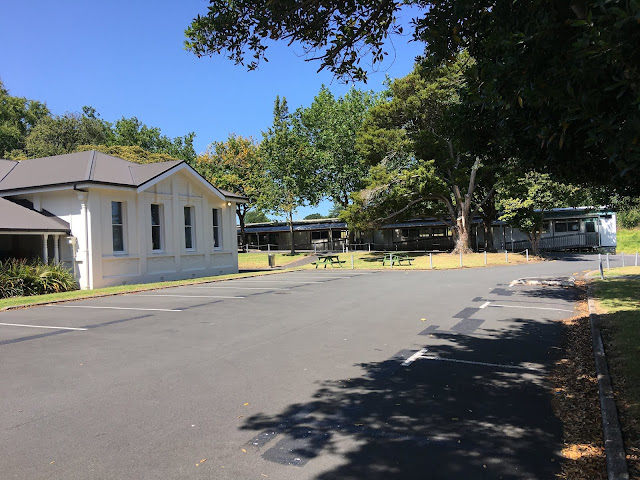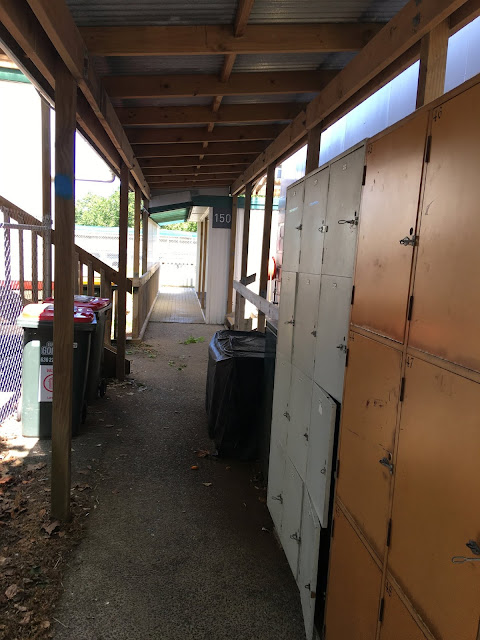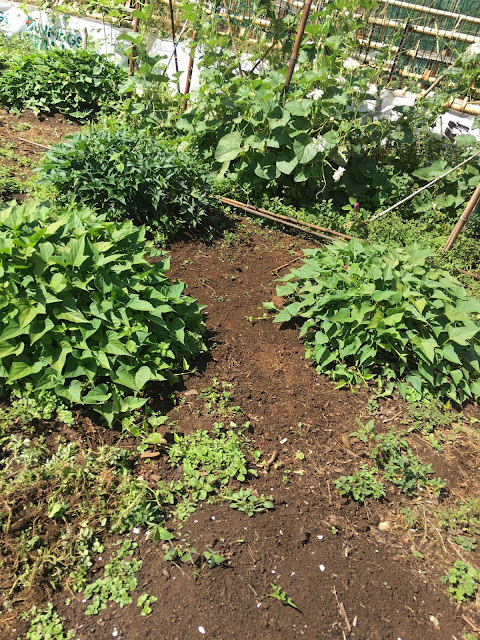Our first working bee day for 2020 was bright, clear and sunny. The list of tasks needing to be done was ready for everyone to choose from...
Watering featured prominently on the list. So far this month there has only been 6 mm of rain, and the evapotranspiration rate has been 3 to 5 mm per day, meaning a water deficit of around 50 to 80 mm.
We had received a load of sea-grass that needed to be washed and then put out onto the gardens as mulch. Janet and Bill were washers and barrow loaders...
Along with Mort.
Bev was busy organising the working bee day - even taking calls too.
Multi-tasker extraordinaire and part of our invaluable 'brains trust' - along with Sarah and Trevor
If you've ever wondered where all the seedlings come from for the working bee plantings - they're planned, planted and propagated by our fabulous 'brains-trust' in the greenhouse.
John processed the privet tree that was had been cut down by former plot holder Richard Main, on the South-eastern boundary of the gardens.
Jenny Gibbs spreads some of the sea-grass mulch onto the young
fennel plants in the beautiful Rainbow garden.
Angela (in her smart new sunhat) spreads compost.
A busy day with many hands making light (and enjoyable) work.
Rebekah - doing more sea-grass mulching
Fiona weeding out the dreaded Oxalis
Jenni weeding and digging...
with Anne and
Cath.
Sarah and Bev working in the Rainbow garden.
Kathryn ready to begin weeding.
David turns over the compost in our recently recommissioned Eastern bins.
And Kerry gave a hand too...
Sinead with her whanau - her brother Paul in the background and her-sister-in-law Becca (hiding from the sun in her hoodie) - who came along to help at today's working bee. Thank you! (Jenni watering with her back to us).
Sinead and Becca hard at work.
The Marigolds that are being grown again for the Sandringham flower mandala again this year, are well established and growing nicely.
The Dahlias are in full bloom in the gardens.
Look at this beauty!
Meanwhile, in the mara kumara garden - our traditional Maori Kumara garden - Keni is at work.
Below is a te mara atahu.
This demonstrates a South Island agricultural technique used by Maori. The rocks are piled above the ground and also extend (by the same amount and to a similar depth) into and below the ground. This provides 'passive heating' of the earth nearby.
As the rocks give off their heat, they create a blanket of warm air, about as high as Keni is indicating. This is enough to protect the leaves of the Kumara from the cold night-time temperatures. Maori technology used 'thermal mass' to create a warm growing environment for the kumara.
Below is a Parara. This is a seedbed where the kumara seed stock would traditionally have been stored, as seen at Ihaumatao. This is another colder climate technique used by Maori. The rocks again provide 'passive heating' and there is enough aeration in the pile to avoid spores growing and affecting the stored seed stock. On the wooden lattice, within the rock pile, thick layers of dried ferns would be laid onto which the tubers would be stored. The ferns allow for side airflow through the layers and also provide insulation.
Below the two Kumara planting beds are evident. The established beds are near where Keni is standing and in front of these are the new beds, that will stay in the ground until Matariki.
The Hue (gourds) are also growing well with plenty of flowers and fruit setting.
Respect is shown to the growing Kumara by the pathways within the Mara Kumara garden being maintained. This stops people from stepping OVER the growing Kumara beds - the respected mounds. The mounds are treated as living beings - as a mauri.
Katya and Angela head off to harvest flax to strengthen the fences of the
Mara Kumara garden
Trevor, back from a successful morning selling our Sanctuary Mahi Whenua organic produce at the Grey Lynn farmers market. This raises funds that help to keep our community garden financially stable.
Trevor sorted out the produce that was available for workers attending today's working bee at the gardens. Two types of plums, some beetroot, and a few Liseta potatoes.
Happy New Year to all Sanctuary Mahi Whenua members and thanks to everyone who made it along to contribute their community hours today. Apologies to those who came early (to avoid the heat of the day) and who weren't photographed on the day - it's so hard to get good Paparazzi!
Happy gardening in 2020.















































